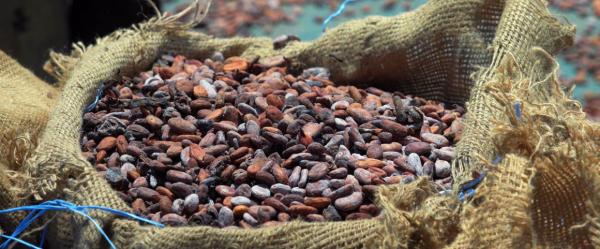Expert view 30 September 2025
- Home
- CIRAD news
- News
- Serge Morand:Biodiversity and disease outbreaks
Serge Morand: “Biodiversity is synonymous with resilience to disease outbreaks”

Serge Morand is an ecologist and specialist in infectious diseases at CIRAD and CNRS © S. Morand, CIRAD
What is the link between biodiversity and the emergence of infectious diseases?
Serge Morand: Within a territory, a rich biodiversity ensures many different services: pollination, water and air purification, soil quality, etc., but also the regulation of organisms that are vectors or reservoirs of disease. In an ecosystem that has a diverse range of living species, each one is found in limited numbers. Predators will, for example, regulate populations of small rodents or animals that carry ticks. These animals or insects, which host many pathogens, will not proliferate. The viruses and bacteria are then “diluted” in this complex whole.
Is that what you call the “dilution effect”?
S. M.: The dilution effect has been observed for numerous diseases, for example Lyme disease in the United States. The loss of large predators, such as wolves, has resulted in an increase in the population of some deer species, including roe deer. However, many deer are very good “hosts” of the bacteria responsible for Lyme disease, as well as being food for ticks that are vectors of the same bacteria. Without regulation by predators, the intermediate hosts multiply, and ticks with them. This proliferation benefits the circulation of pathogens.
On the contrary, in a given territory, the more different species there are, the more this impedes the transmission of diseases. First, the population of “host” species, in other words the living organisms in which the pathogen can develop, is regulated by predators. Second, these host species compete with other non-host species, known as “non-competent” species. For the pathogen, this is then a failed transmission: it will be unable to develop and will die. Again in the United States, we have thus seen that a high biodiversity of birds dilutes the transmission of West Nile fever virus. The “host” birds come into contact with “non-competent” birds, which ensures a certain level of regulation despite the diversity of pathogens.
It could be assumed that limited biodiversity would also mean a lower number of viruses and bacteria. Why is this not the case?
S. M.: A low level of biodiversity does imply a reduction in the diversity of pathogens. However, the remaining pathogens then circulate far more effectively. During major and sudden habitat changes, we thus see that the simplification of habitats results in increased transmission of diseases. For example, shifting from a diversified cropping system to intensive monoculture, or replacing a complex forest by a field of trees with just one or two species. By simplifying ecosystems in this way, we weaken them and deregulation then occurs.
If we take the extreme example of intensive livestock farms, it becomes clear just how much the lack of biodiversity can be dangerous in terms of health. These are enclosed spaces with dense populations of animals that have similar genetic material: the jackpot for a pathogen.
What solutions could be found to foster the ecosystem services provided by biodiversity to address the emergence of infectious diseases?
S. M.: In my opinion there are two important lines of action: first, thinking in terms of territories. Pathogens and their host organisms or vectors respond to localised ecological and social conditions. There is no universal solution. We need to work in close collaboration with health and biodiversity stakeholders in the field. The development of intensive livestock farms with genetically homogeneous animals thus raises questions, especially in terms of their capacity to address health risks in a context of global change. Instead, priority should be given to biocultural diversity, that of local breeds, which are resilient and resistant to local pathogens.
Next, the solutions to be devised should be based on nature and ecosystems. Agroecology, agroforestry, agro-sylvo-pastoral systems, etc. Diversifying the modes of production for agricultural products will certainly present many challenges for the sectors concerned, but will help to prevent the emergence of epidemics that can have devastating economic consequences.
We know that biodiversity increases resilience to health hazards, just as it does for climate change. However, we are still struggling to understand the exact mechanisms involved. We therefore need to urgently develop new research projects that link biodiversity and health; health, understood as the integrated health of ecosystems, animals and humans, which is known as the “One Health” approach.
Finally, it is by understanding emergence mechanisms, the hot spots as well as the cold spots, that we will be able to avoid the next crisis. And biodiversity will play a key role in this.
Serge Morand appointed to the One Health High-Level Expert Panel
Serge Morand is the only French expert to be a member of the One Health High-Level Expert Panel (OHHLEP).
Proposed on the initiative of France with the support of Germany, this expert panel was officially announced by the French and German Ministers of Foreign Affairs and the leaders of the WHO, OIE, FAO and UNEP at the Paris Peace Forum on November 12, 2020.
The panel is made up of 26 independent experts selected by the four international organizations. They will meet at least three times a year and produce reports and recommendations on the links between human, animal and environmental health. The objective is to help public officials make the necessary decisions to prevent and respond to future health crises and to enlighten citizens on the issues surrounding this issue.
The action of the expert panel could be based on the work of the PREZODE initiative, initiated by French research organizations (IRD CIRAD, INRAE) with various international partners.



























